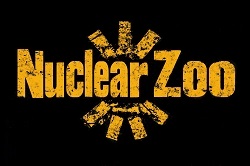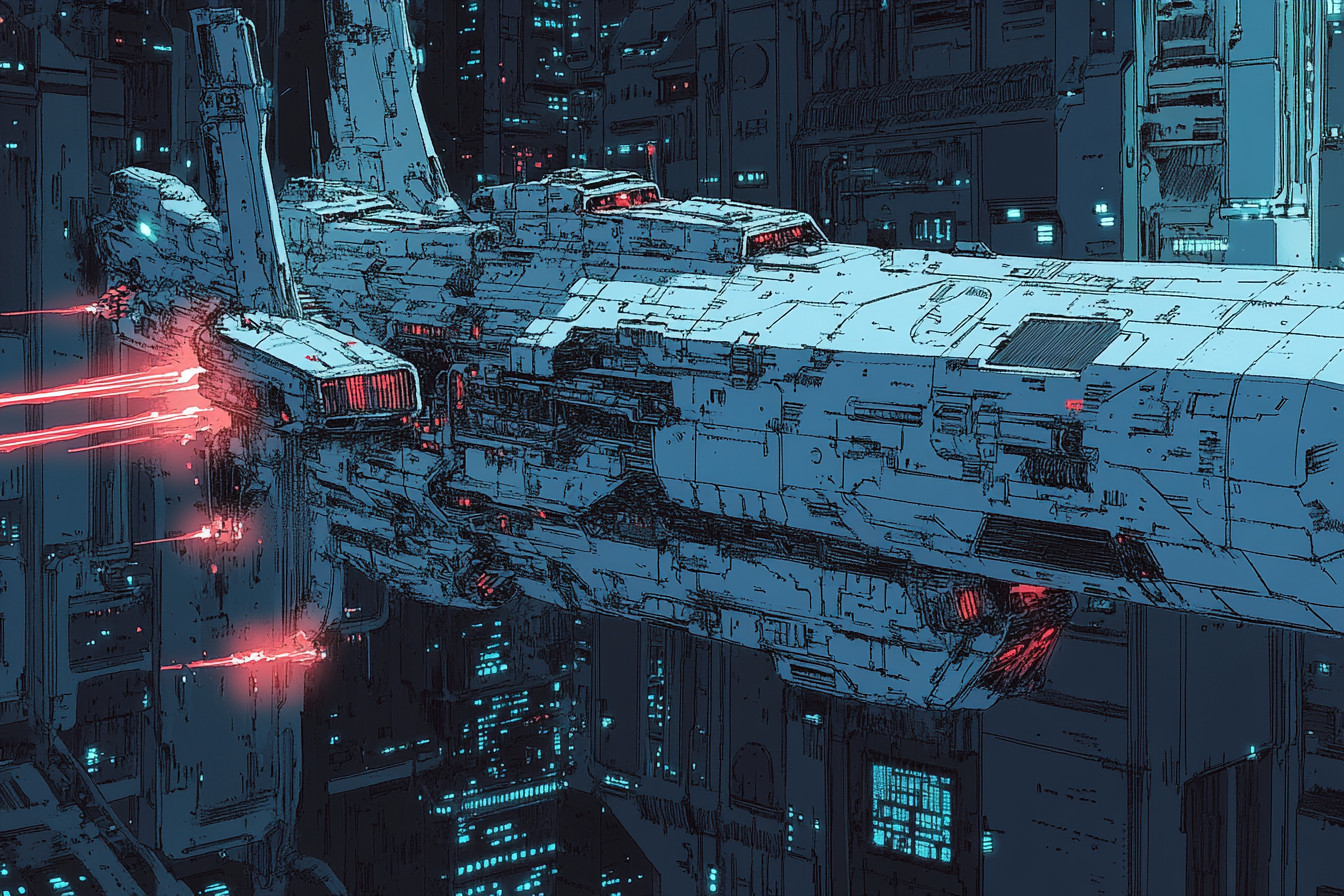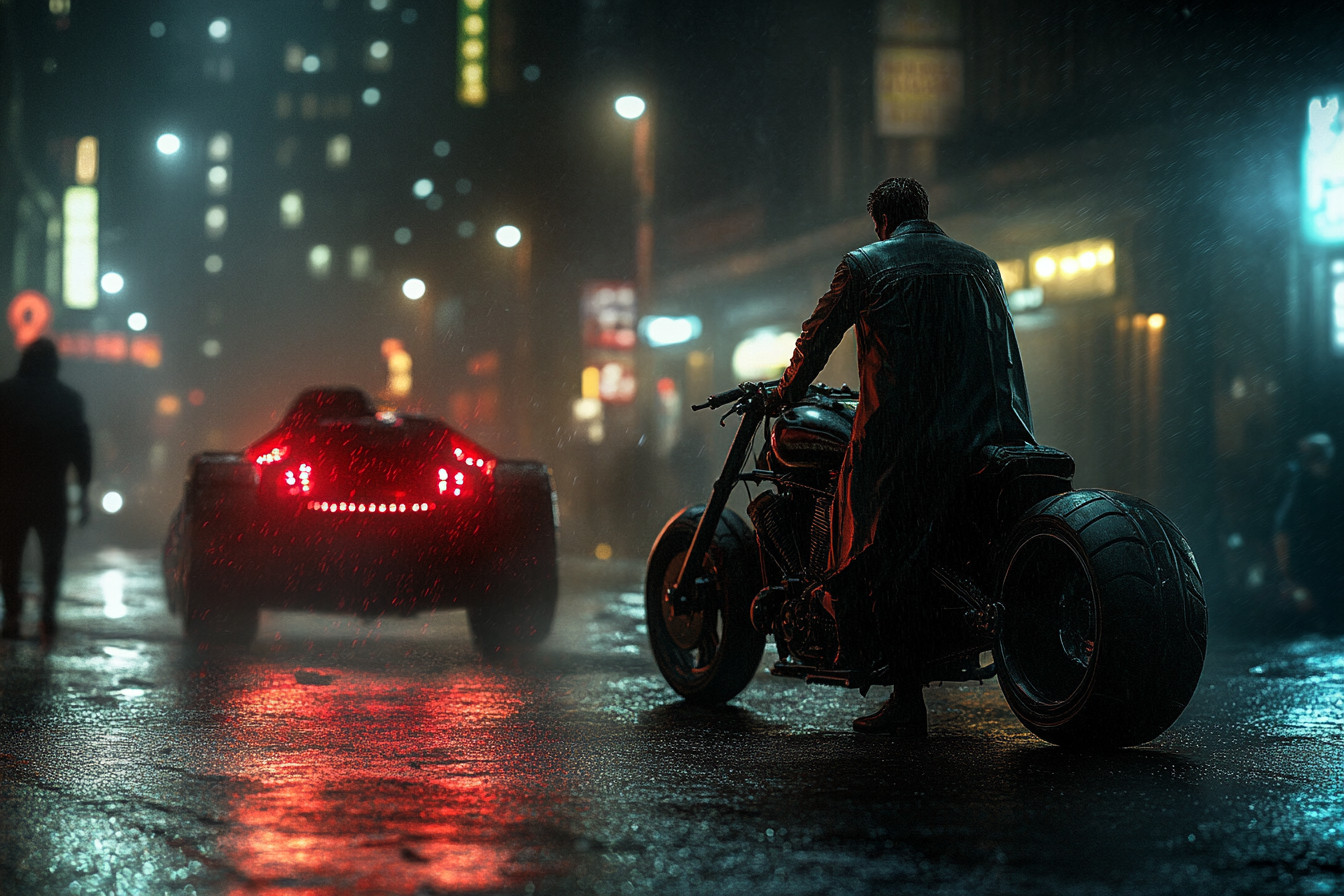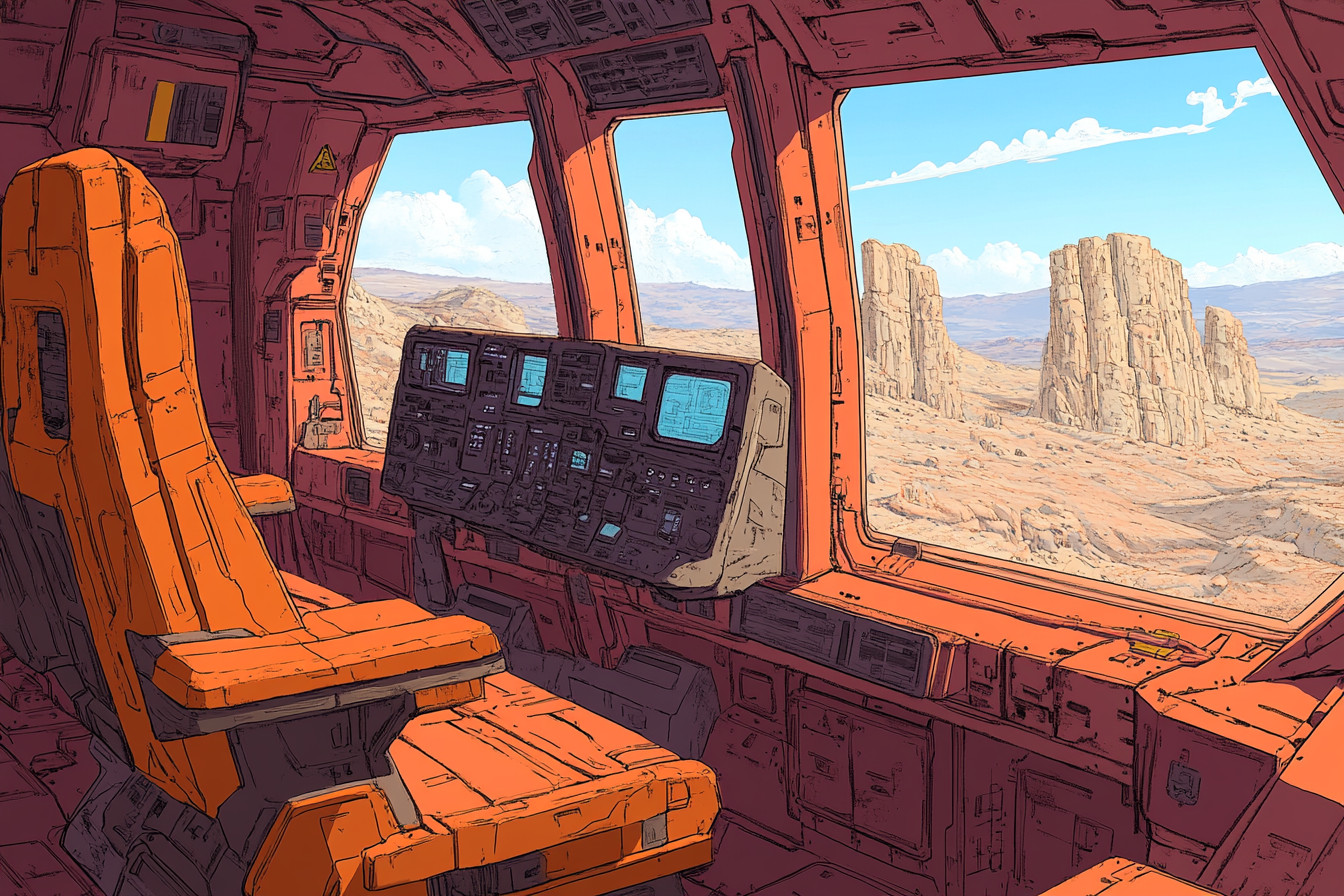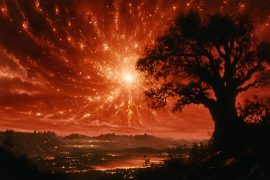When I first inserted a VHS tape of Blade Runner into the VCR, I recalled feeling like I was at an unprecedented moment in time. Sure, I was only a child at the time, but this predates the limitless streams of content available on every screen or the existence of 4K technology. My wires and speakers managed trashy performances without attempts at moderation, attempting to create a light show, and my living room was a jarring and sad attempt at recreating a set from Blade Runner. However, when Ridley Scott’s dystopian universe flashed across the screen, I was enraptured.
Even now, I am astonished as well.
Nowadays Sci-Fi can undergo neglect to the sensitive approach and go for a polished appearance courtesy of digital effects. Computer Generated Imagery type of art does have its appealing side. With the 21st century’s prowess in digital artistry, breathtaking visuals can be made. Still, there is something about the older methods that evokes something within me. Models and miniatures, sets conspicuously crying out to be touched by real human hands, are nostalgic and deliver a magic. Take classic sci-fi like Alien, for instance: one can feel the ship Nostromo, its interior not far from the one the viewer could envision dwelling within.
The reason I might be constantly returning to these timeless classics is that they provide more than simple entertainment. They allow me to relive eras of innovative visual storytelling. “The Cabinet of Dr. Caligari,” which had its set design constructed using painting and drawing as the basis, is as “unreal” in its way as today’s cinema with its computer-generated worlds. Still, I can’t help but feel that Caligari’s Expressionist universe is similar to the House on the Ridge Road: “How I Revile You,” which is where I borrowed the old school joke for the prop divisions (which is more or less a collection of props).
Yet it’s different from the average living room or dinette set since it possesses character. Even the average pillow, as we learn in the world of stagecraft, has to perform just like an actress.
When I think about the difference between old and new science fiction, I find myself recalling the Chest Burster Scene in *Alien*. The reason that moment stands out to me is not just for its shock value, but rather for the incredible cinematic ride it takes you on. Yes, I admit it: I’m a bit of a film school nerd. I enjoy hyperanalyzing a film’s scene beyond its apparent story to consider its cultural impact and what its aesthetics convey. So, *Alien’s* chest buster scene is memorable for every single one of its aspects – the story, the beauty, and the politics.
Thinking deeply about things while sitting in class can, indeed, lead to one or two unusual consequences.
The puppets and miniatures in the 2001: A Space Odyssey and The Thing give these timeless classics life because of the imperfections in craftsmanship. The puppeteer-made aliens, the wobbling spacecraft, and the meticulously crafted miniatures all were made by real people, not machines. Carpenter’s sci-fi body-horror The Thing has miniatures, but the eye-boggle inducing prosthetics made the audience, including the U.S. Antarctic Research Program, doubt the humanity of the characters on screen.
Every cyborg, puppet and biology had a story to tell, and every pound of latex worked on each sculpt told me we used to live when artists inspired our imaginations. I cannot recall coming across a marveling documentary revolving around Star Wars level effects spectacles. The editing bay of the studio went in awe when they used realistic technology to guide the Death Star trench run for the first time.
While certain modern sci-fi film creators get to work with CGI, it’s as if the complete opposite of practical effects is being utilized. It is undeniable that CGI can be quite spectacular. The landscapes shown in James Cameron’s Avatar are spectacular – the kind of landscapes every Visual Effects supervisor wishes to create. However, that certain quality is missing out on those sights and landscapes. One of the contributing factors is that they are simply too perfect. And they seem too perfect, I believe, because they are clean. Clean in the sense there is no dirt, no wear, no dust that implies anything has ever lived or traveled through those places. For the more forgiving of us, the remnants of the Apollo Program are charmingly unrealistic in the “mock up” seen in 2001: A Space Odyssey. However, at least the stuff seen in that way does seem more reasonable to have some presence in, you know, space.
What sticks with me when I think about older movies, including my favorites like Star Wars, is the existence of a model that uses the physics of our world rather than CGI. The mechanics give it some history and weight, as well as an almost slapstick determination unlike anything captured in the digitally painted worlds. This is why the Star Wars universe, along with a plethora of movies filled with practical effects, gives the impression that they exist in reality and are waiting to be found.
A classic sci-fi does have one thing that modern movies often forget to include: quality storytelling. If you’ve seen any modern version of a timeless sci-fi film, like 2001: A Space Odyssey, you know exactly what I mean. While some may not be on board with every creative direction taken by the filmmaker, I am sure that many agree on the astonishment and admiration cubed brings during segments like the Stargate scene. Old sf undoubtedly knows how to give us the chills and, at the very least, attempt to evoke some form of deep emotional response. That’s as much what makes it great as anything else.
Take, for example, The Terminator. At first glance, it seems to be a story about a relentless action android pursuing a victim throughout Los Angeles. Beneath the surface, however, lies an unsettling contemplation of an unresolved nightmare about an unfathomable machine and pull of destiny being ignored in contemporary science fiction. Do we have any contemporary blockbusters that focus on survival? I distinctly remember watching The Terminator for the first time one late night, the engine of the VHS player purring like a cat in the background. The special effects, albeit far from convincing, blended seamlessly with the raw, gritty aesthetics that formed the backbone of the movie.
There is absence of forgiving beauty. You felt the stakes; in the eyes of Sarah Conor, you felt the overwhelming mismatch of emotions and for the Terminator, there is only one way out and that is through the door. Everything was simple and there was no need to beat around the bush with the fireworks that were remarkably crude.
The modern sci-fi films leave out on building immersion. The world creation and visuals feel bombastic and highly distracting, which rips the audiences away from the fictional setting. It’s true that the modern era features many science fiction films that can be regarded as part of the evergreen classics. However, some recent films have indeed been able to generate the degree of immersion perceived as deep, transformational atmosphere. The “slow-burn” Arrival and Dune are two such recent examples. Unfortunately, these films portray profound atmosphere far more effectively than most contemporary sci-fi films attempt.
I remember the time I came across a worn copy of Dune at a garage sale, and immediately saw that it was not just a forgotten book, but a lost treasure. Its plot unfolded alongside patiently demanding my attention, while its gradual immersion captivated me like the best books do. I felt as if there were secrets to be revealed in the book’s nooks and crannies, and that if I looked hard enough I would find something like the “Shai-Hulud” that Paul Atreides fantasizes about while dreaming in the sand of Arrakis. In another alternate timeline, where the 1984 Dune was a success, I would consider this version the Dune that finally showed up, except for its charm could use polish.
Unlike the present, the past does an interesting job engraving time’s mark on its creators’ imprint. When I reminisce about the good old days where I replayed Metroid on my NES console or watch reruns of Star Trek, I recall more than just entertainment contained in my present: I remember the ethos of those two franchises, and I’m being nostalgic about the crackling audio imperfections of an old laser disc or a VHS tape like the one I had back in the 80’s.
I do just happen to hold a reference for a unique type of sci-fi, and I don’t regard myself as being equally sentimental for it. Blade Runner has its different movie sets that were built and attempts to suspend and distract the audience, piquing one’s curiosity through suggestive rather than overt and straight forward explanations. A term like “so called” is part of the future’s lingo and I’d expect a “rainy” and “neon” to be adjectives associated with the not too distant world―the very aesthetics used describe several other scenes in the movie―and only one of them is a cinema. You get abandoned in this type of cinema and provided with zero explanation or a lousy guide.
It is, perhaps, the feelings elicited from the old masterpieces that I miss the most: that there is an enormous world we are able to interact with in ways beyond what we experience on screen and that there are many potential paths waiting to be explored alongside mysteries longing to be solved. Including something I miss from the 60’s and 70’s combined with all of us having this intense collective sentiment on how limitless we were – both in terms of exploring the universe and exploring deeper avenues within our own psyche. Wishing to be a part of the dream Erwin Schaw intended to implement while formulating the screenplay of his The Five Pennies or while Stanley Kubrick was working on the scripts of 2001: A Space Odyssey, gave me with moments of disbelief. In reading or watching, I came across the very thought – the colossal elegantly formulated question of what the universe entailed along with the narration, what happened; the context post-existence.
It’s like cutting-edge tech visuals compel us to naively fawn over them, but they for sure lack the wonder factor that lingers for the background flares incorporated in chronicles like The Terminator or The Close Encounters of the Third Kind. We are left stranded on two aspects: restraint from old-schoolers and classic immersion.
Because the so-called classics encapsulate living experiences, the state of modern-day wonders aim-strike on surpassing a mere story in-visioning them as preposterous “immersion” in a contradictive sense. Mark my words; truth be told, they simply will retain existence based around solutions broadened to encompass imagination. The omnipotent device titan dubbed as Kenosha can effortlessly fabricate wonders episode at a time. Devices don’t require these extensive efforts in terms of fuels or energy.
The experience of fuel stave-off magic makes classics gems and is one of the reasons to attribute admiration towards every piece of them. Parallel to legend benchmarks set like Terminator, old flicks of health pack riders went one step further, and forged atmosphere while setting mood which builds tension as the audience gets glued to character as the struggles unfold. Instead, you can witness timeless hand crafted mood.” Lastly, to summarize everything, drama pauses are the new blasts of mandatory love.”
Let’s take a look at The Terminator as an example. On the core of the film, a relentless cyborg killing machine hunts a woman in Los Angeles. A somewhat underappreciated facet of modern action-sci-fi movies is their ability to incorporate more profound themes. As I watched, I was enthralled with how there concurrently existed considerations of fate and survival, a balance that seems to be absent in contemporary sci-fi-tainment features. I can still recall vividly how I watched it for the first time: Captivating, in large part because it was either late at night, or there was a gritty, low-light lighting aesthetic to the movie. The soft whoosh of the VHS added to an atmosphere that a DVD or streaming service could never capture.
It was the first time a movie felt like a must experience, something to be witnessed live as you can only fully grasp the spectacle when engrossed in it. Watching as the sounds of judgment day played out truly felt like I was being privileged with a behind-the-scenes view.
Modern fantasy films sometimes forget the fundamental element of crafting an atmosphere. In trying to impress the audience with spectacular sights, the filmmakers often overlook the more meticulous approach to creating an experience. This means portraying a world in which watching and appreciating the scenery is just as crucial as the characters and their interactions. It’s not fair to say all modern cinematic endeavors are like that; I would argue that at least two recent films, Arrival and Dune, still possess some of that magical, leisurely pacing. But these films are the exceptions to the rule.
I still remember buying Dune from a garage sale. Its film versions have been released in 1984 and are still watched today. The books captures each reader’s imagination uniquely unlike any other novel in the world. I tend to also gravitate towards books which are lengthy and order and that give an illusion of being placed in another world. Lynn’s vision of Dune is so surrealistic and unlike anything else, even her use of special effects is unprecedented. Villeneuve was also able to capture the impression Dune gives to readers, though the ambition will always be something I find joy in the attempt of more blocky 1984.
The classic stories have more soul than modern movies do not only because of the creativity that went into them, but because of the imagination and effort put into them by the makers with their own hands. Whether it is Star Trek or Metroid, the older games have a warmth that is far too familiar to mankind. It creates a world that is more entertaining, warm, heart-felt, and relatable than the current reality, which can be further dissected like an overused, robotic, and a boring reality television show.
The world of science fiction that we have today still serves as a reminder of all the risks we have ever taken to make groundbreaking edits. There is a reason for the existence of movies like Blade Runner. All the risks that are taken in filmmaking are captured within them. While the aesthetic of the world is captivating, what makes me appreciate Blade Runner even more is a captivating franchise that puts faith in their audience to be intelligent and think deeply for themselves, reminding me that every pour of neon is hand crafted and made from life giving rain, and there is nothing more full of life than a person who is willing to drown in a reality devoid of explanation and made by modern sets of sci-fi.
Perhaps over-explaining isn’t the worst problem here. Maybe what is considered possible in stories, like these, is. Our genre seems to be trying hard to find relevance. And it makes sense that it tries to achieve a type of realism as well: all of the futuristic technology and wild ideas need to have a hint of reason behind them.
The most vexing part of the old classics for me is how they seem to pay homage to the notion that the world exceeds what is visible on the screen. They managed to inspire us with the hope that worlds filled with enigmas exist even in tales we are familiar with. I wonder if other people felt like me but when I watched 2001: A Space Odyssey it was like I was being invited to a dream, scene by scene, that I was never going to unlock fully. The calm mastery of direction, the eerie silence of space, the unfathomable mystery of the monoliths put the movie beyond a “voyage” into the elements of human existence which truly feel “never-before-seen.
This is also why I still enjoy some of today’s new sci-fi films, I always find myself reaching out to ancient VHS tapes and dusty old paperbacks. They evoke an era that was not about dazzling audiences with spectacles, but rather the great literary science fiction which blended speculative and thoughtful literature. And even when not stated outright, it dealt with enormous, fundamental issues. Seriously, All The Boys Love Mandy Lane? Starship Troopers? Gattaca? Does that sound like the type of literature that gives us warning against the possible side effects of a future built on science?
